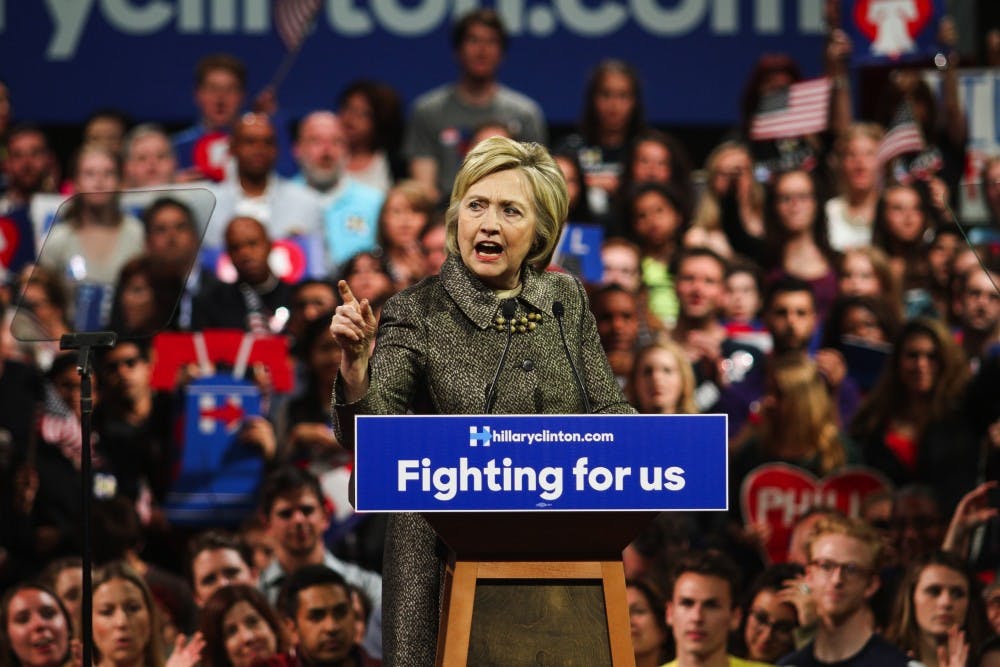
Some dismiss Clinton’s plan as a political move to attract disgruntled Bernie Sanders supporters who are reluctant to support the nominee.
Credit: Ilana Wurman , Ilana Wurman, Ilana WurmanA School of Design professor criticized Democratic presidential nominee Hillary Clinton’s plan for free public college.
Penn City and Regional Planning professor William Grigsby sees holes in Clinton’s plan. In an editorial in The Wall Street Journal, Grigsby writes that Clinton’s plan has “at least five serious deficiencies that make it infeasible.”
In July, Clinton announced her plan for free public college education for families earning less than $125,000 annually. The plan will initially provide free college to students who come from families earning less than $85,000 per year. Clinton aims to raise the threshold to families earning less than $125,000 by 2021.
According to a Current Population Survey from the U.S. Census Bureau, 75 percent of families make less than $85,000, and only 10 percent make more than $135,000 annually.
Out of the 6,837,605 students currently enrolled in four-year public universities, more than 6 million students would be eligible for free tuition based on Clinton’s plan, according to numbers available on StatisticsBrain.com. And based on a poll by USA Today, 77 percent of college-aged students (people aged 18 to 29) support free college.
The plan comes in the wake of sharply increasing college rates. According to NPR, tuition has gone up by 40 percent in the past decade, and have very little prospect of slowing down.
Many don’t see as many merits to Clinton’s plan, saying it is a political move aimed at winning over supporters of Sen. Bernie Sanders (I-Vt.).
Grisgby believes the plan would be increasingly hard for states to comply with — and they would “have to make a policy U-turn” to do so.
The difficulty for most colleges to follow this proposed plan is rooted in their diverse costs of education, even within the same institutions, NPR reported.
Grigsby also complained in the article that the proposed plan would exclude private universities, and therefore would “seriously weaken the financial and academic strength [of these universities].” In-state students who attend public universities pay on average $9,410 per year, while out-of-state students who attend public universities pay $23,890 per year.
But Penn students supporting Clinton disagree with Grigsby’s criticism.
“It is extremely practical,” said Engineering sophomore Michael Ramdatt, executive director of political affairs for Penn for Hillary.
Ramdatt believes that even though college costs are bound to increase, Clinton’s proposed plan provides a good way to properly finance education.
In addition to providing a solution to the problem of student debt, Clinton’s proposed plan also aims to alleviate already existing student debt, even allowing for debt forgiveness.
Current law makes it impossible for students to declare bankruptcy.
“It is very difficult to eliminate student debt in bankruptcy,” said David Skeel, a Penn Law professor who specializes in the topic.
Skeel explained that the only time that it may be possible to forgive student debt is when the student shows proof of “undue hardship” that would make the payment of the debt impossible.
Despite his criticism of Clinton’s proposed plan, Grigsby does not maintain a completely negative outlook on the future of the plan.
“A much more broadly framed debate will be needed to address the rising costs of post-high-school education that so many families face,” he wrote.
The Daily Pennsylvanian is an independent, student-run newspaper. Please consider making a donation to support the coverage that shapes the University. Your generosity ensures a future of strong journalism at Penn.
DonatePlease note All comments are eligible for publication in The Daily Pennsylvanian.




